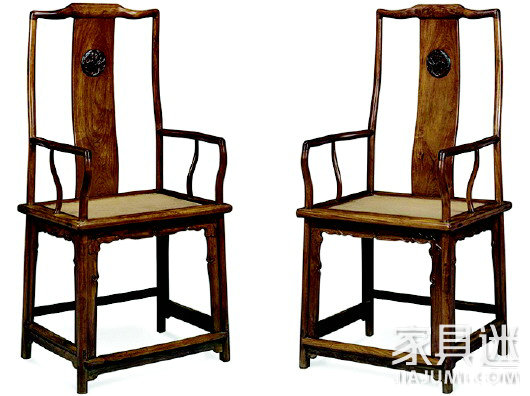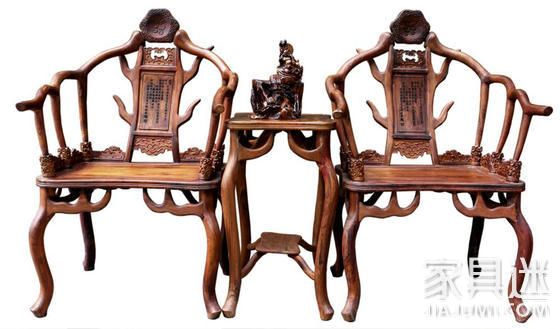Ming and Qing furniture, because it can fully reflect the designer's thoughts and emotions, reflects the characteristics of the times, has a special cultural and artistic connotation, and is hailed as the "microcosm of beauty" in the Ming and Qing Dynasties. Then, mahogany furniture is an important part of Ming and Qing furniture, and what kind of historical connotation does it have? What is the craft of mahogany furniture in the Ming and Qing Dynasties? Today, Xiaobian takes everyone to see the history and origin of mahogany furniture and Ming and Qing mahogany furniture. It is said that the origin of mahogany furniture can be traced back to the seven voyages of the Three Treasures of Zhengbao, Zheng He, which began in 1405 in the Ming Dynasty. Zheng He had been to Vietnam, Indonesia, Java and Sumatra, Sri Lanka, India and the east coast of Africa. It brought Chinese silk and porcelain. The main thing brought back was mahogany. Because the redwood is heavy, it is just for ballast. . In the Song, Yuan and Ming dynasties, Chinese furniture used medium-hard materials such as eucalyptus, pine, eucalyptus, and nanmu, similar to the materials used in European and American furniture today. Since Zheng He brought back mahogany such as huanghuali, wenge and iron knives, some skilled craftsmen used these hard, delicate and well-textured mahogany to make furniture that is stronger, more beautiful and more practical than the previous generation. The Ming and Qing furniture manufacturing industry has never been more prosperous. According to research, Zheng He's voyages to the West also promoted the formation of the regional style of mahogany furniture in the Ming and Qing Dynasties. Suzhou was originally the anchorage of Zheng He's seven voyages to the Western Ocean. The redwood was also brought ashore from Suzhou. It can be seen from the handed down furniture and documentary records that the production and development of Ming-style furniture was centered in Suzhou. In the early Qing Dynasty, Ming-style hardwood Furniture is produced in many places in China, but only Suzhou's style and craftsmanship are the most comprehensive and prestigious. It has been deeply cherished by people since the Ming and Qing Dynasties. The mahogany originated in the Ming Dynasty in 1405. Zheng He went to the Western Ocean seven times. Every time he returned to China, he used the mahogany to press the cabin. The carpenters brought back the hard, delicate and well-textured mahogany made of furniture and crafts for the emperors to enjoy. The massive input of redwood and the demise of the dynasty only flowed into the development of the people. "Redwood" does not refer to all red wood, nor is it a kind of wood, but is the collective name for the current domestic mahogany. According to the definition of national standards, its scope is five categories and eight categories. Five genera: red sandalwood, Dalbergia, Diospyros, genus, and Trichoderma. The mahogany furniture has experienced three historical stages of Ming style furniture, Qing style furniture and late Qing Dynasty furniture, reflecting the artistic style and characteristics of different periods. Ming-style furniture is dominated by huanghuali wood, followed by rosewood, eucalyptus and nanmu, as well as a considerable amount of lacquer, lacquer and large lacquered snail furniture. The place of production mainly includes Suzhou's wooden furniture, Beijing's lacquered paint, painted furniture, and Shanxi's black lacquered snail furniture. The Qing style furniture is mainly composed of rosewood, followed by yellow flowers, rosewood, rosewood, etc., and the number of lacquered furniture also accounts for a considerable amount. There are also some foreign furniture, most of which are Japanese furniture. In the Qing Dynasty, the furniture was slightly inferior to the Ming style in terms of science, but in terms of decoration, it was higher than the Ming style, thus forming a unique Qing style. The furniture of the late Qing Dynasty usually refers to the furniture made by Daoguang towards the future. It is more boring and boring. It is almost impossible to talk about the special artistry. It is the result of excessive pursuit of traditional decoration and extremes. As a kind of utensil, furniture is not only simple daily necessities and furnishings, but it also has rich cultural connotations in addition to satisfying people's daily life. By understanding the source, characteristics, style of the palace furniture, the type of furniture, the relationship between furniture and architecture. It can be seen that furniture is a comprehensive carrier of many art. The decorative theme of furniture vividly reflects people's aesthetic tastes, ideas and ways of thinking and customs. In terms of the furnishings and use of furniture, it has been closely integrated with the strict concept of traditional ritual customs and respect for the past few years. The use of furniture was originally mainly to worship gods and ancestors, and later gradually spread to everyday life, but only confined to the powerful aristocratic class. The shape, texture and decoration of furniture have strict grades and boundaries. Further reading: Detailed explanation of Huanghua pear in Ming and Qing furniture The precious mahogany furniture of the Ming and Qing Dynasties is precious in the logs, and more expensive in the craftsmanship. The three basic rules of the German scholar Gustav Eck in summarizing the mahogany furniture craftsmanship in the "Chinese rosewood furniture map" are: it is not necessary to use wooden pins; it is not necessary to glue as much as possible; it is not used anywhere. Tanning, that is, without any nails and adhesives. The obvious nationality in the shape and craft of mahogany furniture is the value of collection and investment. The mahogany furniture is called human furniture and art furniture. Many so-called mahogany furniture are not made according to the traditional process, with strict scale and å¯æ¦« structure, but glued and metal-bonded. After five or six years, wood and metal will repel each other. Many buyers now use magnets to detect mahogany furniture, because mahogany furniture made with elegant craftsmanship will not have nails.
A trash can with a swing top lid has a lid that you need to push by hand. So this is also a manual trash can. Some swing cans have lids with a spring, so it closes right after you remove your hand. Choose the right Trash Bins you need. Or you can contact us for OEM. We are the professional manufacturer for metal and plastic products. Some of our products are CE/ SGS certified.
push trash can,hands free trash can,table trash can,garage can,manual trash can TAISHAN YUEXIN INDUSTRIAL GROUP LIMITED , https://www.gdmetalproducts.com
Mahogany furniture origin 1405

The history and culture of mahogany furniture in the Ming and Qing

The three rules of Ming and Qing furniture crafts